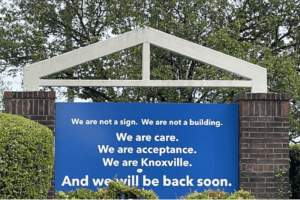TNJN Spotlight: Knoxville makes centuries-old tradition all its own
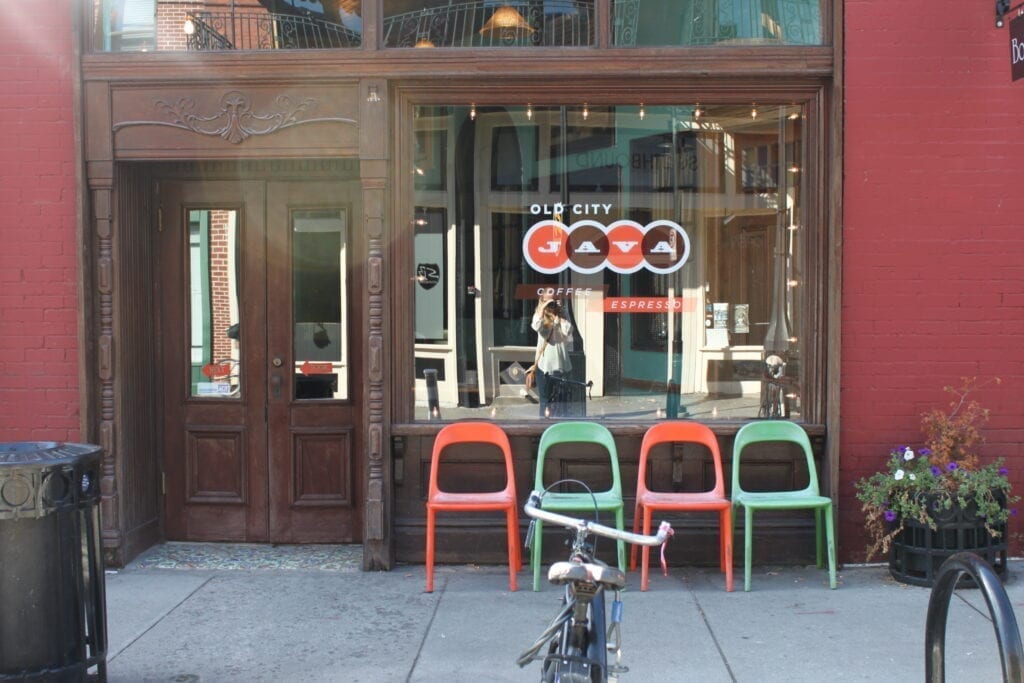
Old City Java, located on South Central St. in the Old City, has become a mecca of coffee culture in Knoxville, known for both exceptional coffee and a relaxing atmosphere.

Marion Kirkpatrick // TNJN
There is something uniquely divine about drinking the perfect cup of coffee while perched in a cozy coffee shop. Not to mention the quality conversation and culture contiguous with this centuries-old practice. Coffee is an art that comes in many forms: brewed, dripped, steamed, and poured. Hot and cold. Small and large. Delicately mixed with milk or as black as the night. Sipped and savored or knocked-back like cough medicine.
It’s mid-afternoon in the Old City on a mild day in late October–-the kind of day when you can’t decide between a cold or hot beverage when ordering from the local coffee shop. Today, the corner of East Jackson and South Central is a sleepy place, but warm solace can be found inside one of Knoxville’s most delicious local joints, Old City Java.
Old City Java sells some of the best coffee in Knoxville, at least according to Metro Pulse readers for the last five years in a row. However, the shop is followed close behind other local competitors, like Remedy Coffee, The Golden Roast, Coffee & Chocolate and Knoxville Brew, or K-Brew, which opened on North Broadway earlier this year. These shops cater to the 54 percent of Americans that drink coffee every day, and the growing number – around 30 million people – that regularly drink specialty coffee beverages like lattes, cappuccinos and other espresso-based beverages.
While these shops are bringing a new wave of coffee culture to Knoxville, it’s only a new addition to traditions present in Knoxville for decades. Since 1882, Knoxville—and the Old City—has been a coffee town. That year, James Franklin Goodson and his family founded the JFG Coffee Co. in Morristown, Tenn., a small town about an hour northeast of Knoxville. The company quickly became the most popular roaster in the region, selling around 80 percent of the coffee within a hundred-mile radius of Knoxville during most of the 20th century. In 1921, JFG moved their roasting facility to Jackson Avenue in a building right around the corner from where Old City Java sits today.
Now, over 130 years later, the city has a more vibrant coffee culture than ever before. JFG signs shine above a downtown scene interspersed with local coffee shops displaying a distinct flavor of culture all its own; a new culture with both an effervescent past and future.
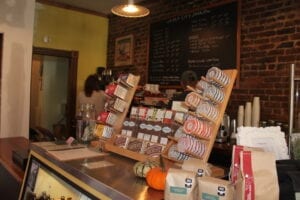
Marion Kirkpatrick // TNJN
A renovated old store-front with faded paint and creaky, uneven wood floors, Old City Java boasts a peaceful, lived-in atmosphere: indie rock pulsating through the speaker system just loud enough to be enjoyed, the hum of quiet conversation, and the infrequent clacking and buzzing of the espresso machine and coffee grinder. Hip, brooding baristas tote a selection of fare-trade beans, loose-leaf teas, artisan chocolates and pastries freshly made in the store. The coffee menu is basic; instead promising the highest quality ingredients, time, attention-to-detail and the overall, eye-popping presentation of each beverage.
Regardless of the hour, most of the tables in the café are full. Singles and pairs are strewn about the two rooms: some with books, some with computers, and others deep in discussions. In the back corner, an artist sits silently in deep concentration over an intricate ink drawing. University students, urbanites and coffee lovers from around town frequent the shop.
“Coffee shops kind of go hand-in-hand with record stores and bookstores in a way that it can be an awkward interaction for people,” said Shaun Parrish, co-owner of Old City Java. “To make someone feel comfortable walking in is really, really important.”
Parrish and his wife, Meghan, bought the shop six years ago. When they re-opened the shop, formerly named Java, they hoped to turn a profit by focusing on a comfortable atmosphere with really, really good coffee. So far, says Parrish, they have been very successful. He is always striving to find better beans and interesting brewing methods to keep customers coming back for more. But, he said, a comfortable place of community is key—and that’s something you can’t manufacture.
“I think sometimes we’re more of stewards of this place than owners,” he said. “We’re just kind of steering the ship. This establishment belongs more to the neighborhood that it sits than it belongs to me. I think that people take ownership in it themselves, and all I can do is ensure that people are comfortable and have a cup of coffee.”
Around the corner sits Remedy Coffee, another craft-brew place with a similar menu, atmosphere and demographic; yet, the two, as well as many other establishments that pepper the downtown area, coexist peacefully. Competition, however, does not seem to be a problem at all.
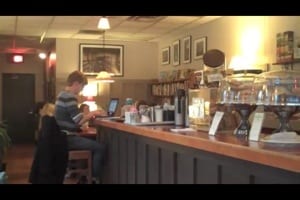
Jessica Carr/ TNJN
“I go to places like Remedy and K-Brew to get coffee all the time,” Parrish said. “I think competition is really good. I think the more people that come to town and do good work just creates more awareness. They’re plenty of people to come and buy coffee.”
Café culture centered on local coffee shops is not exclusive in Knoxville, in fact, this phenomenon, along with the celebration and cultivation of coffee, has occurred both nationally (in recent years) and around the world for centuries. According to the National Coffee Association USA, the discovery of the first coffee berries remains only legend.
The most popular myth surrounding coffee’s discovery points to a 9th-century Ethiopian goat herder, Kaldi, who noticed that when his goats ate the berries from one particular plant, their energy levels greatly increased late into the night. Kaldi immediately brought his findings to the local monastery, where an abbot there made the unknown berries into a drink, which helped him attentively sustain evening prayers. News of the energizing affects of coffee cherries quickly spread—eventually to the whole world.
While the legend of Kaldi may not be true, the spread of coffee cultivation and consumption around the world is undeniable. The drinkable products created from coffee plants have improved dramatically since then, too.
The first cafes, or restaurants focused on serving and cultivating community around coffee, appeared in North Africa and the Middle East in the late 15th century. Soon these shops spread through Europe, notably in France, Italy, Spain and Great Britain. These cafes were much less about the coffee and much more about social experiences, like gathering with friends, discussing controversial and innovative ideas and enjoying live music and art. These places, as well the “sit while you sip” concept, quickly became a cornerstone of local culture, remaining just as prevalent and important today.
According to a report in the New York Times, Starbucks, the immensely popular specialty-coffee chain in the United States and Asia, has faced difficulty assimilating their store model into Europe because of its lack of intimacy, atmosphere and ironically, seating. However, like the article suggests, Starbucks has had little to no difficulty gaining popularity in the US. In fact, they accomplished quite the opposite.
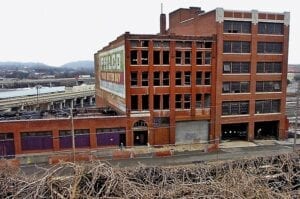
Chandler Klinck // TNJN
According to Parrish, Starbucks both created and popularized the market of specialty coffee preparation that currently pays his bills.
“Going back,” he said, “coffee shops that we saw up through the 80s and into the early 90s all had a certain [lower] quality. Starbucks—and we have to give Starbucks credit where credit is due—brought, essentially, specialty coffee to the masses. They introduced the average American consumer to things like cappuccinos and lattes, Americanos, espresso-based drinks. There wasn’t really a big market for that prior to them, and they really opened the doors up.”
Not only did Starbucks open the door for themselves, they also opened the door for shops like Parrish’s place—shops that do exactly what they do, only better.

Ryan McGill/ TNJN
“They’re is kind of a fast-food model,” he continued. “Starbucks has done a really great job getting the word out, but they’re not going to ever be the best coffee on the block—that’s not their model. Their model is high-volume and pleasing lots and lots and lots and lots of customers. […] Where I think it’s different is that cafes can do better. Mom-and-pops can do better…they can find better coffee. They can work with local producers, even in town. […] Starbucks isn’t doing that. For them, it’s still a commodity thing, but for us, we can make small choices every single day that elevate what we do.”
These small choices, like working with local farmers to buy milk, creating “sweeter,” “more delicious” lattes, and sourcing beans from small farms through collectives like Counter Culture Coffee are only a few of the “small choices” shops like Old City Java are choosing. And the difference, well, the proof is in the products—and the customers that keep coming back for more.
“It’s a neighborhood joint,” Parrish said. “I think most of the people we see here, 85 percent or so of our customer base, are people we see every other day—if not every single day.”
Why, he says? Well, it all comes back to community.
“There aren’t many places where people can just sit and gather or come and go at their own pace,” Parrish said. “Coffee shops do really well with that. They have for years. If you go back centuries, coffeehouses have always been a place where people come and gather to discuss things, to socialize. I don’t know why that is, but I know it works.”
Edited by Zach Dennis

